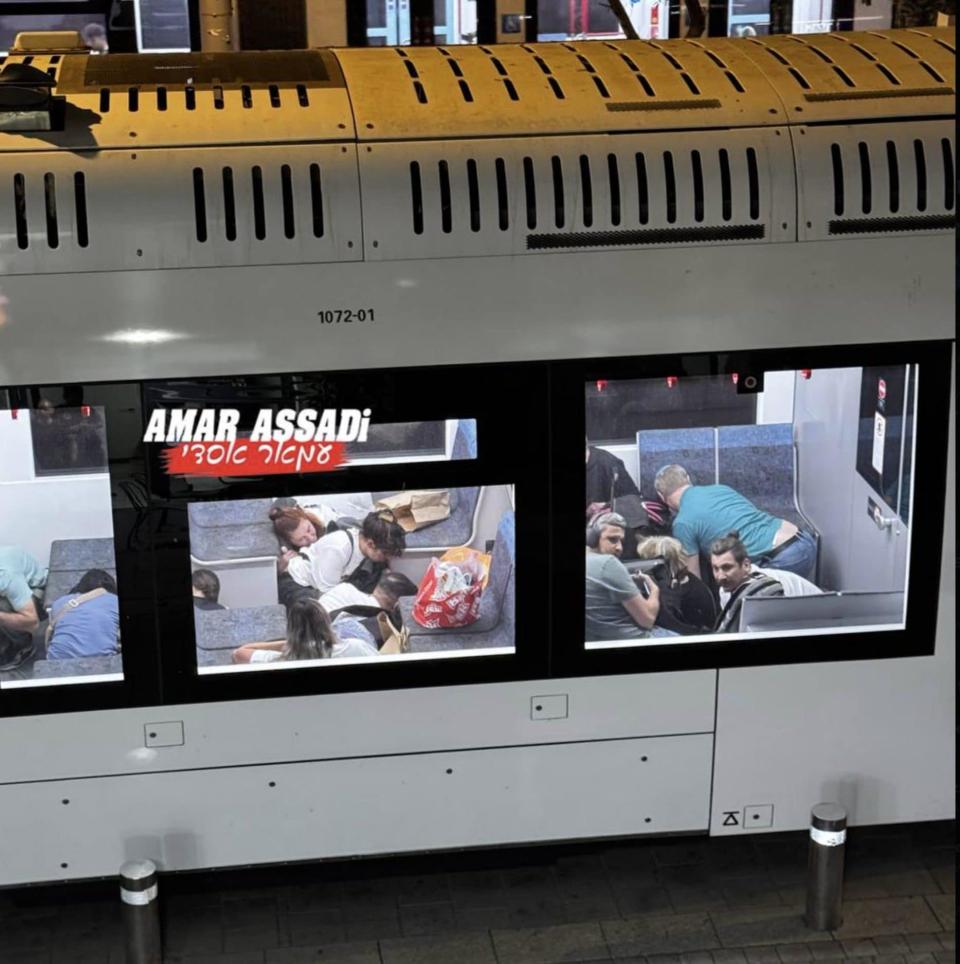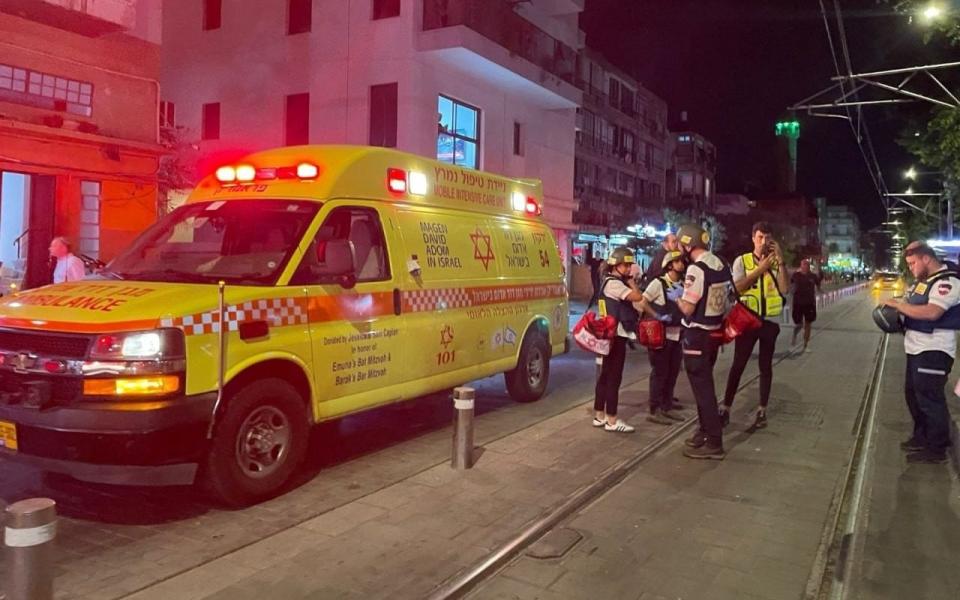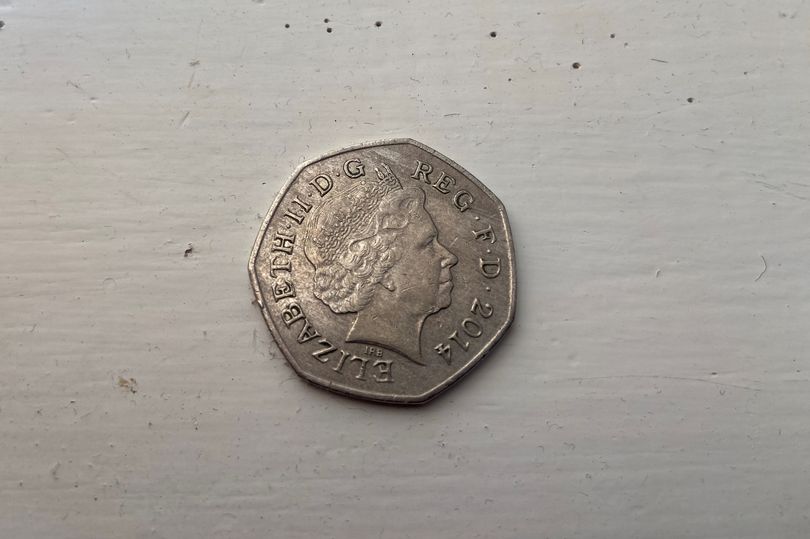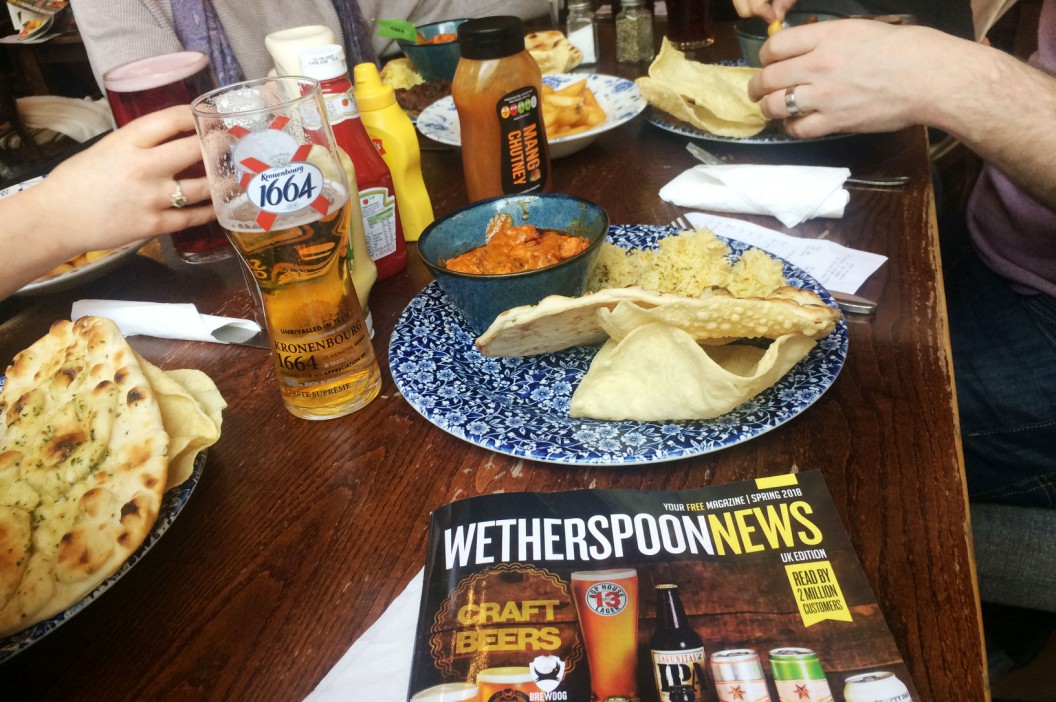It was just another ordinary day in the emergency department, but I was depressed.
Bed zero usually held gravely diseased patients requiring urgent resuscitation. At that time, a young female patient occupied it. She had been out with her boyfriend when she fell into a lake. We had administered CPR when she was brought to the hospital half an hour later but hadn’t been able to revive her. A white sheet now covered her from head to toe.
The boyfriend’s legs shook as he cried. It was the first time I had seen someone literally “fall to their knees.” The father had stormed into the emergency department, took one look at his daughter, screamed and grabbed the boyfriend by his neck. Despite the father’s thin frame, it had taken four security guards to separate them.
But it wasn’t the tragic love story that had me depressed. I sighed as I twiddled with the two-milliliter syringe in my hands.
Bed one contained a young male patient. He’d been rushed into the emergency with multiple notable abrasions on his face. I had rushed to reach him to ask his name, intending to evaluate if his airway was intact. Since he had answered without a problem, he didn’t require an intubation. I walked away, disappointed.
But not having been able to try an intubation wasn’t why I was depressed. Forget intubation; I couldn’t even do one of the most basic procedures required of a doctor. I glanced at my syringe. All I had managed to do was successfully coat its insides with heparin to prevent blood from coagulating when I took a blood sample.
On bed two lay a twenty-year-old female patient in a bright red, traditional wedding dress. She clearly belonged to a family with a high social standing. Before her marriage ceremony to a man her family had betrothed her to, she had jumped from the top of the fancy palace at the marriage site. The jump resulted in complete fractures of both her femurs and a few vertebrae. Her oddly angled legs didn’t fit the picture of her glowing skin and mehendi patterns at all. She was currently being uncooperative with the doctors despite being in a lot of pain. It probably didn’t help that instead of being sympathetic, her father seemed to be scolding her. Her story sounded like a classic feminist tale: a strong woman who rejects the man her patriarchal family promised her to.
Her story was common in India, but that wasn’t why I was depressed. I raised the syringe in my hand. It glinted in the light above me. The speck of blood inside it taunted me, a reminder of my failure to obtain an arterial blood gas, or ABG, sample.
For most laboratory investigations, either a venous or an arterial blood sample would work. However, an arterial blood sample becomes particularly important when administering oxygen to a patient. Since arterial blood contains the oxygen absorbed in the lungs, the measurement would indicate whether or not the patient is responding to the supplied oxygen.
My success with ABGs was like playing tennis: on some days, my top spins were inside the court, and on others, my racket became a cricket bat and launched the ball into space.
Today was one of those cricket bat days. I had tried three ABGs and failed all of them. Obtaining these samples had become so normalized for me that today’s failures were equivalent to forgetting how to breathe. Perhaps someone ought to take my ABG and check my oxygen levels.
I knew that until I solved my current problem, I wouldn’t be able to function normally. But the situation was complicated. ABG success rates are linked to confidence. My first failure at the ABG had put me on a vicious cycle that ensured the rest. But why had my self-confidence been low during the first one? Was it because I was sleep-deprived, having been doing twelve-hour night duties for three days now? Or was it because I’d had a quick dinner because I woke up late? Or maybe I was annoyed at my friend during our debate yesterday about his firm beliefs in the subjectivity of emotions?
My hands clenched involuntarily. I looked down at them in surprise, finding nail marks in my palms. Ah, so this is the reason.
My friend claims that emotions are irrational and unpredictable. He said that each person reacts to situations in different ways, and therefore emotions are subjective. On the other hand, I believe that the emotional response is not only rational but very predictable. Emotional responses stem from patterns formed from accumulated experiences. Understanding a person would make it easier to anticipate their reactions. Businesses and social media even exploit this technique when advertising their products. But my friend had been thoroughly unwilling to consider my ideas.
Four attendants rushing a stretcher into the emergency snapped me out of my musings. I instantly got up along with the other emergency medicine residents. The patient’s eyes were partially closed and his face was lacerated in various places. A large flap of his scalp hung loose, revealing red and black tissue beneath.
By the time I realized that his altered consciousness was an indication to perform an intubation, a resident was already in position at the head of the patient with an endotracheal tube in her hand. Disappointment rose in me. But then I scoffed at my foolishness: what was the point of feeling disappointed about not having the chance to perform intubation when I couldn’t even take an –
“ – ABG, now!” someone called.
The world kicked into high gear. Of course. The patient was being intubated and connected to a ventilator. An ABG would be needed to check that the intubation had his oxygen saturation under control.
I glanced at the syringe in my hand. It would be poetic to say that this syringe that had failed me previously would now help me succeed. However, this needle carried the risk of HIV transmission since I had already pricked a patient with it. I threw away the syringe and took a new one, quickly flushing it with heparin. I stood beside the patient, gazing at his wrist, imagining I had ultrasound eyes that could see directly to his radial artery.
“Please, he’s already in so much pain.”
One of the patient’s companions was looking at me. Judging by her age, I assumed she was the patient’s mother.
“I know,” I replied. “This sample will help with the treatment.”
“He’s already been pricked. Look at how hurt he is. Don’t cause him more pain,” she pleaded desperately.
I glanced at the patient. His eyes were directed at the ceiling, unseeing. He groaned intermittently, straining against the cuffs tied to his hands to prevent him from pulling out the tube reaching down his trachea. With multiple lacerations, a few skull fractures and a part of his head peeled off, I doubted he’d feel the prick of a needle, even if it was for a procedure as painful as an ABG.
Because arteries are deep beneath the skin, the needle pierces a lot of tissue to reach the artery, causing pain. Additionally, arteries aren’t directly visible like veins are. People inexperienced in the art of taking ABGs usually end up poking around blindly until they finally pierce the artery. When I had first managed to get my first ABG, it left me ecstatic for the next week. Today, however, I was proving incompetent. I felt as if my failures to obtain an arterial blood sample had rendered five years of the effort I had put into medical school useless. What had gone wrong so suddenly? What if this happened to me later on when I became an established doctor? Forget established – was I even worthy of becoming a doctor?
I closed my eyes and tried to shut out my thoughts and the patient’s mother’s talking. With each passing second, her buzzing complaints got louder and more distracting. I knew I needed to do this fast before she changed her mind about letting me take the sample.
I opened my eyes and uncapped my syringe. The patient was lean and thin; hence, his veins were prominent. They were begging to be sampled. I had to remind myself they weren’t important here; the unseen radial artery was. I placed two fingers on the patient’s wrist, trying to locate the pulse that indicated the artery’s position. I held my syringe slightly above, poised to strike.
If my looks could burn, I would have turned the patient’s hand to ashes. The pulse teased me. At one moment, I felt I had gauged their directions perfectly, and in the next, they seemed to have shifted. Every micro-adjustment of my fingers left me feeling dissatisfied. I turned my needle a few degrees clockwise, then counterclockwise; a few degrees upwards, and finally downwards. Yes. If it were going to work, it would work like this. With a final feel for the pulse, I poked the patient’s skin in one clean stroke. He didn’t even twitch his hand. I moved my needle deeper with a bated breath.
Suddenly, red flashed in my plastic syringe, and my heart soared. It was perfect. With each beat of the pulse, the volume increased.
When the blood reached the mark of one milliliter, I placed a piece of cotton at the puncture site and withdrew the needle. “Press that cotton against his wrist for at least 5 minutes,” I instructed decisively. It was verbal confirmation to the universe that I had collected the sample against all odds.
Task completed, I turned to leave when the patient’s mother spoke. “You’re just going to keep taking his blood instead of healing him.”
I opened my mouth to reply, paused, and then closed it. At my level as a medical intern, there was a limit to how much I could help patients. There was nothing more I could do than take the sample. So I didn’t respond.
I walked towards the blood gas analyzer. As usual, it was in the calibration process, something it did whenever it wasn’t running a sample. And for some reason, it would go on and on repeatedly four or five times in a row before it decided to perform its duty. It was as if it had an Indian government job. So, as I waited for it to (metaphorically) drink its tea, I thought about the mother’s comment.
Was there really nothing else I could do for the patient?
I should have been happy. At long last, I’d gotten my hand back on collecting arterial samples. However, an uncomfortable feeling gnawed at me, like butterflies in the stomach coated with uneasiness. I had been questioning whether or not I could become a good doctor since I couldn’t take blood samples. But now, even though I had taken one, the patient’s relatives had still not been convinced of my worthiness. I looked at the syringe in my hand. Was there a point to it?
Almost poetically, the blood gas analyzer beeped, signifying its readiness to work again.
It’s not about the sample
The difference between the emergency department and the medicine wards is time. In the emergency department, patients don’t have time because…well, they need treatment as fast as possible. In the wards, however, most of the patients are stable. And because they are no longer in a dire condition, they have plenty of time to ask questions.
So, while in the emergency room, I didn’t face issues taking blood samples from patients. The ward was a different story altogether.
“I have been pricked three times since the morning.”
“Yeah, but those were different samples…”
“Ouch, ouch, OUCH! AHHH!”
“I haven’t even pricked you yet!”
“Sir please please please…”
“I’m trying to heal you, not torture you.”
“Sir, I’m sick, I’m sick!”
“You think I don’t know that? That’s why I’m doing this.”
“Do you promise this is the last time?”
“Do you promise to get better without treatment?”
It was currently 10:30 pm in the medicine ward. The evening rounds had dragged on particularly late. Considering that I’d been here for over 13 hours, I was a little desperate to finish up and go have dinner. But of course, I’d been given one of the most time-consuming samples to collect – a bacterial blood culture.
I walked towards the assigned patient’s bed, my arms full of gloves, syringes, blood culture bottles, clean gauze pieces and a betadine bottle. The patient eyed me menacingly as I dumped my tools onto his table.
“I’m not going to be giving you my blood,” he declared, putting on his glasses as if he were a lawyer getting prepared to argue his case.
I sighed. It was going to be a long blood draw.
“Why is that?” I asked as I unpacked my sterile gloves, confident that I’d change the patient’s mind in the time I needed to prepare my equipment.
“I’ve had no change in my condition since I arrived here. The only thing that you doctors have been doing here is taking my blood and nothing else. Don’t bother with your sample. I won’t give it to you.”
And here I’d been hoping to get this done within ten minutes. I looked up at him. He was around 60 years old. He seemed educated, too, and well-off economically. His son, sitting beside him on a stool, gave me an apologetic look.
Realizing that my plan wasn’t going according to my predicted timeline, I put down my half-opened gloves. “Look. Medical treatment takes time. Your diagnosis…”
I glanced at his file. He had multiple myeloma, a cancer of the bone marrow that forms defective white blood cells. Because these white blood cells can no longer fight against infections, the patient becomes susceptible to microbes. This patient was running a fever, which meant there was a chance he had an infection. And to check for that, we needed to get his blood cultures.
“I have a friend who is a doctor,” he interrupted me. “I visited him a month ago. He gave me some medication, and my back pain resolved instantly.”
“Yes, but he didn’t treat the underlying condition, did he? You’re here in our hospital. That means you aren’t well.” I was no longer arguing.
“There is no underlying condition; there’s only destiny. What has to happen will happen. Just the other day, I had parked my car outside my house. I’ve been parking in that exact spot for over ten years now. I’ve never had any trouble. Yet, one week ago, someone crashed into the side mirror. I’ve never had an accident while driving, but my car got damaged while stationary.”
“Uh…okay?”
“That’s destiny. What happened is completely illogical. I should know since I’m a math professor at university. How do you explain that?”
“Bad luck?”
But he wasn’t waiting for my response. Whether or not I answered, he continued within two seconds of asking a question.
“If I’m going to die, I’m going to die. You and all your medicines can’t stop it from happening.”
“Your disease can be controlled. There is a decent chance of remission,” I insisted.
But he wasn’t listening to me. “All you can do is take my blood and test it. And with the amount you take, you’ll kill me faster than my disease is. As a matter of fact – “
“Can I take your sample while we talk?” I asked.
He didn’t answer my question and continued talking. I slowly reached for his hand, waiting for him to resist. He didn’t. I assessed his veins, tied a tourniquet, wore gloves, cleaned the sample site and held up my syringe. He was looking at me, fully aware of what I was doing. He didn’t stop me, choosing to just keep talking instead.
All I had to do was “hmm” and “ahh” intermittently. I was vaguely aware that the patient was discrediting the medical community with his supposed logic. He was also saying something about how honest he was and didn’t accept bribes from students for a passing grade on their test papers. All the while, I took his samples. He didn’t even wince or complain about the fact that I had pricked him in two different sites as required for a blood culture.
When I finished my work, he was still speaking. “Politics is involved everywhere. Take my university, for example. Some of the students – “
“I’m done with taking your samples.” I showed him the two bottles.
He took a few seconds to register them. “Good for you. But it won’t change anything. Remember that.” He huffed.
I checked the time on my phone. It was almost 11:00 pm.
“Well, goodbye,” I said and walked away.
A voice followed me. “Sir?”
I turned around. It was the patient’s son. He had followed me into the hallway.
“What’s wrong?” I asked.
“You are currently a student, right, sir?” he asked.
“Yes.”
“You’ll be a very good doctor in the future, sir.”
I tilted my head. With faculty, senior and junior residents all working here, and considering their pivotal roles in treatments, I hadn’t even considered myself a doctor. Forget a good one. “Uh…thank you.” I fiddled with my culture bottles.
“No one talks to him,” the son continued. “Everyone just comes, does their work and goes away. You were the first person to truly talk to him.”
I felt a little guilty. I hadn’t exactly spoken to the patient to make him feel good; I just wanted to make him amiable to give up his blood. “You’re welcome.” I decided that was the best response. “I’ll see you tomorrow.”
When I arrived the next day, however, I didn’t see the patient or his son. When I asked where he was, the junior resident told me that the patient’s vitals had collapsed in the night and that he’d died. They had tried resuscitating him without success.
I sat back in my seat, silent and confused. The patient had been just fine yesterday. I had a conversation (albeit a one-sided one) with him. Now, suddenly, he was dead. I’d seen a lot of patients die before, but I hadn’t talked to any of them for that long before it happened. The discussion I had with the patient hadn’t meant much to me yesterday, but today, it felt as if it should. Had I really made the patient better? Did it even matter since, ultimately, he had died just a few hours later?
I thought back to the son’s words. Neither he nor the patient had cared about the fact that I had successfully collected his blood sample. They had just appreciated that I talked to him. It hadn’t been my medical skills that impressed them. It was as if only I appreciated my skill at taking blood cultures and ABGs. Were my medical skills not enough to make me a good doctor?
Perhaps having maximal knowledge wasn’t entirely the correct answer to being a good doctor. Sometimes, quack doctors, the kind who prescribed pointless medication and unnecessary IV fluids, were preferred by patients purely because they received more attention. I had heard multiple studies suggesting that what patients wanted from their doctors was to be adequately heard.
Was this why the patient’s son had appreciated me yesterday?
Maybe if doctors were receptive as well as knowledgeable, that might put them above the rest. Still, it seemed much more logical to hone my medical knowledge and procedural skills than to invest time and energy in my communication ones.
I didn’t have an answer then. Until I figured out what was suitable for me, the sight of blood in my syringe during a successful sample draw would continue to fuel me.
The views expressed in this article are the author’s own and do not necessarily reflect Fair Observer’s editorial policy.













































































































































You must be logged in to post a comment Login